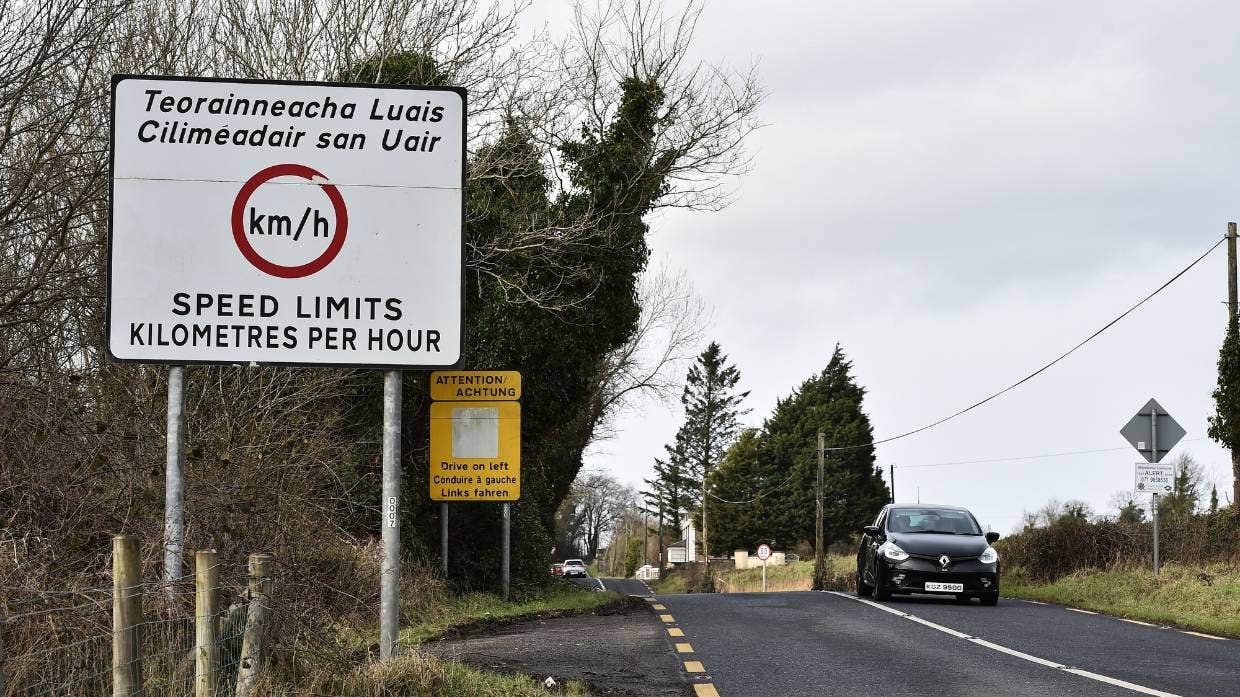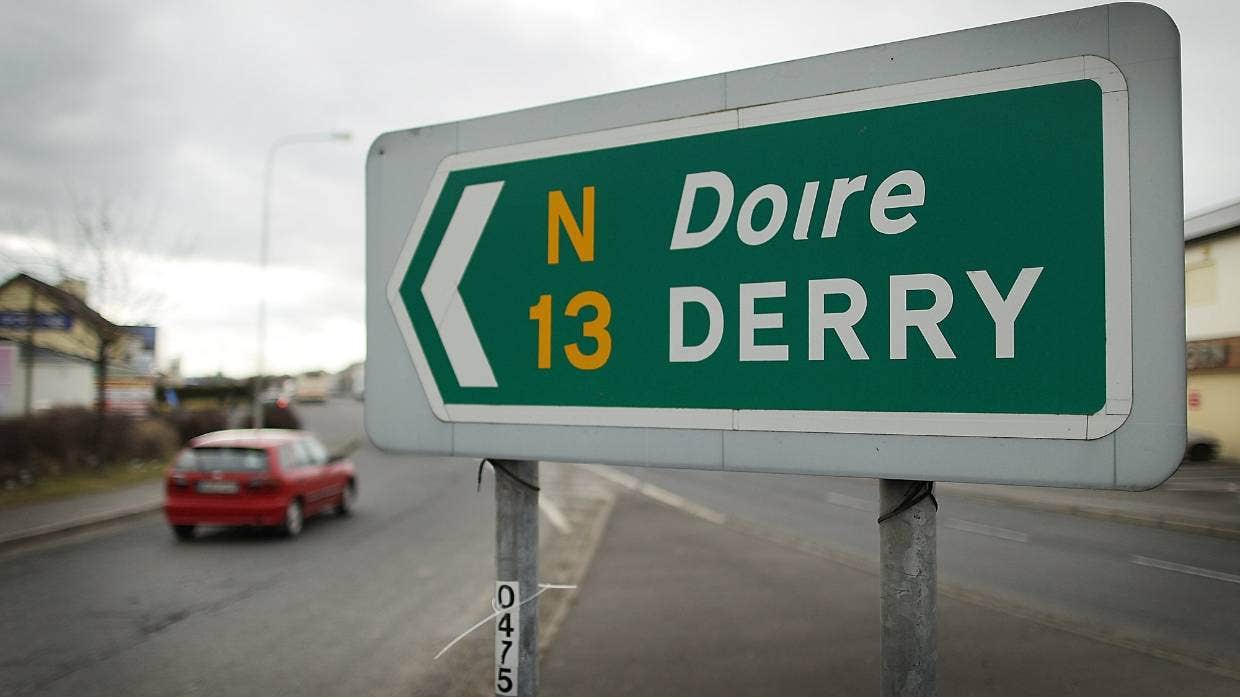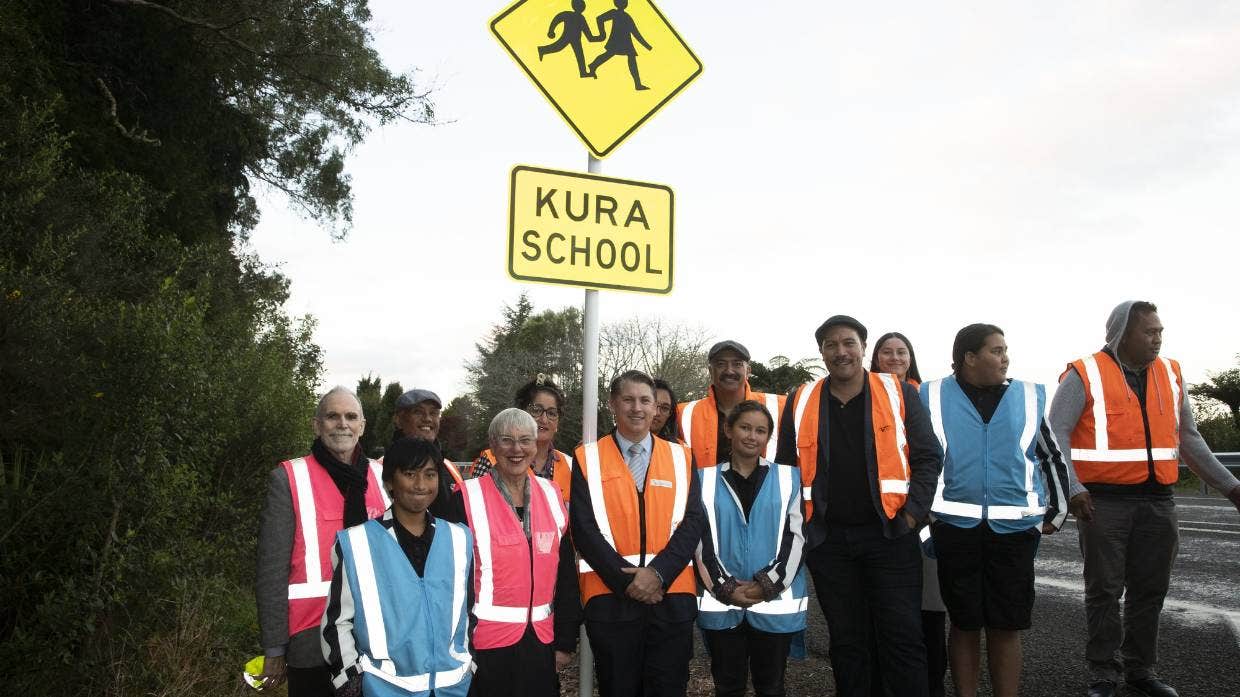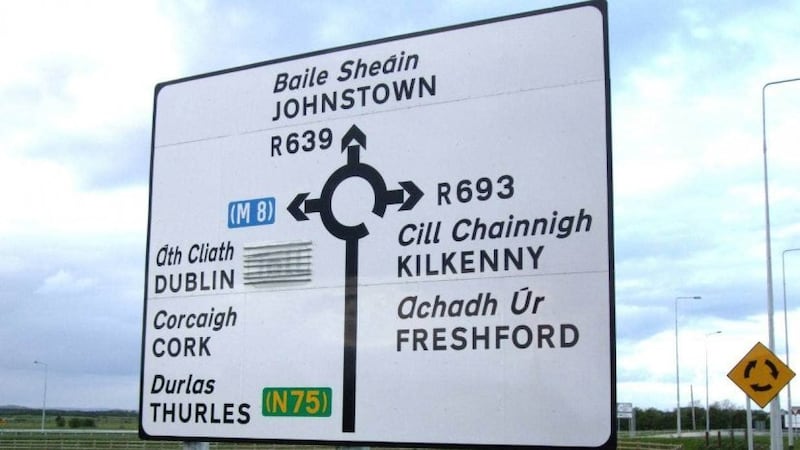A bilingual road sign on the R639 north of Urlingford, Republic of Ireland. Seighean / Supplied
By Finlay Dunseath, Stuff
Bilingual road signs are commonplace in Ireland, Scotland, Wales and Belgium, but a proposal to introduce them here is dividing politicians. Finlay Dunseath takes a look at how things have gone in Ireland, and what this could mean for Aotearoa.
Road signs bearing both te reo Māori and English are closer to becoming reality in New Zealand, with close to 100 bilingual options put up for public consultation in May.
While the Government has thrown its support behind the move, the National Party had a mixed reaction to the proposal, with some MPs claiming it would create confusion while others offered their support.
There’s another country of 5 million or so people with a similar culture to New Zealand that has bilingual road signs. We thought we’d check it out.
How does bilingual signage work in Ireland?
The Republic of Ireland has had bilingual signs bearing both Irish Gaelic and English since the early days of independence in the 1920s – or in some places just Irish.
Irish is the first official language of the Republic of Ireland, with English the second. Due to this, traffic signs give prominence to Irish Gaelic text, which is displayed in italics above English text written in capitals and an equal font size.
The requirement for signage to exhibit both Irish and English was enshrined in legislation by 2008 regulations made to the Official Languages Act of 2003, which ensures an equal status is given to both the Irish and English languages in the Republic of Ireland.
The country’s informational and directional traffic signs are bilingual or Irish-only, while warning and regulatory signs remain largely icon-based.
While most public signs in Ireland are bilingual, in the Gaeltacht regions - where the only official language is Irish Gaelic - traffic signage is often exclusively in Irish.
In 2005, more than 2300 towns, villages, fields and crossroads in the Irish Gaelic-speaking Dingle Peninsula of County Kerry had their previously bilingual names changed to Irish only.
What benefit does bilingual signage have for Ireland?
The Republic of Ireland’s Department of Transport is one of a few organisations which work with two primary languages on their traffic signage.
A spokesperson for the department said the requirement for traffic signage to be bilingual allowed them to provide clear messaging for both people whose predominant language was Irish Gaelic and those who preferred English.
“Overall, the current system is considered to provide a clear, consistent, legible and safe approach while providing for both languages on road signs.
“The system is well understood by the driving public either resident or visitor, and no complaints are received regarding clarity or difficulty in reading text in either language,” the spokesperson said.

Road signs denote the border crossing in the village of Belleek on February 14, 2019 in Belleek, Northern Ireland. Photo / Getty Images
Due to the additional text which comes with catering to two languages, strict formatting regulations ensured the signage could be easily read and understood, the spokesperson said.
“From a safety perspective it is essential that road traffic signs convey their messages in a clear and concise manner so that the information can be assimilated quickly and efficiently by road users. This is especially the case on the high-speed national road network.”
From another perspective, Tourism Ireland spokesperson Darragh Walshe said the presence of Irish Gaelic on road signs sparked conversations about the country’s history and culture.
“The bilingual road signs in Ireland add to the character, culture and the story of the place. They definitely add to the visitor experience and quite often generate curiosity and conversation with the locals, who invariably welcome the opportunity to tell the stories, the history, and the ‘tales’, associated with the place they live in,” Walshe said.
What does the research say?
Researchers around the world have looked into the effect bilingual signage has on motorists, largely finding bilingual signage has an unsubstantial effect on drivers’ behaviour.
In Scotland, which also introduced bilingual road signage, research commissioned by Transport Scotland in 2012 found that bilingual signs increased driver tasks but did not significantly increase accident risk, and importantly resulted in no increase in deaths or serious injuries.

A road sign points the way to Derry on March 16, 2010 in Bridge End, Ireland. Photo / Getty Images
Multilingual signage displaying three lines of text or less was found to have no significant impact on comprehension time, but signs displaying more than four lines of text could cause confusion and impact the behaviour of road users.
In New Zealand, Waka Kotahi says best practice for traffic signage means the signage should be able to be read and understood in “a fraction of a second”.
Researchers in Wales found that motorists’ reading comprehension time saw no increase when English was displayed above Welsh on bilingual signage.
Waka Kotahi argued any potential negative effects of bilingual road signage could be mitigated through the use of evidence-based design guidance.
What would the change mean for Māori?
Dr Rawiri Taonui, an independent writer and New Zealand’s first professor of indigenous studies, said the introduction of bilingual road signs would be a significant step to normalising the use te reo Māori.
“The road signage will normalise te reo but also normalise the uniqueness of te reo, particularly when people visit our country.
“It follows a trend that we see overseas, everyone refers to Wales, Scotland, places like that, at the end of the day the practice is quite widespread,” Taonui said.

Transport minister Michael Wood unveiling a new bilingual Kura sign at Whangamarino School in 2022. Christel Yardley / Stuff
He said support for the revitalisation of te reo Māori was on the rise and people would quickly get used to the change.
“The support for the language is growing ... it’ll take a bit of time to get used to some of it and there may be one or two adjustments that we might make, on one or two of the signs that I’ve seen we could maybe shorten a couple of things.”
For example, Taonui suggested the te reo Māori text for expressway signs “Te Ara Puaki”, which translates to “The Expressway”, could be shortened to read just “Ara Puaki” as in “Expressway”.

